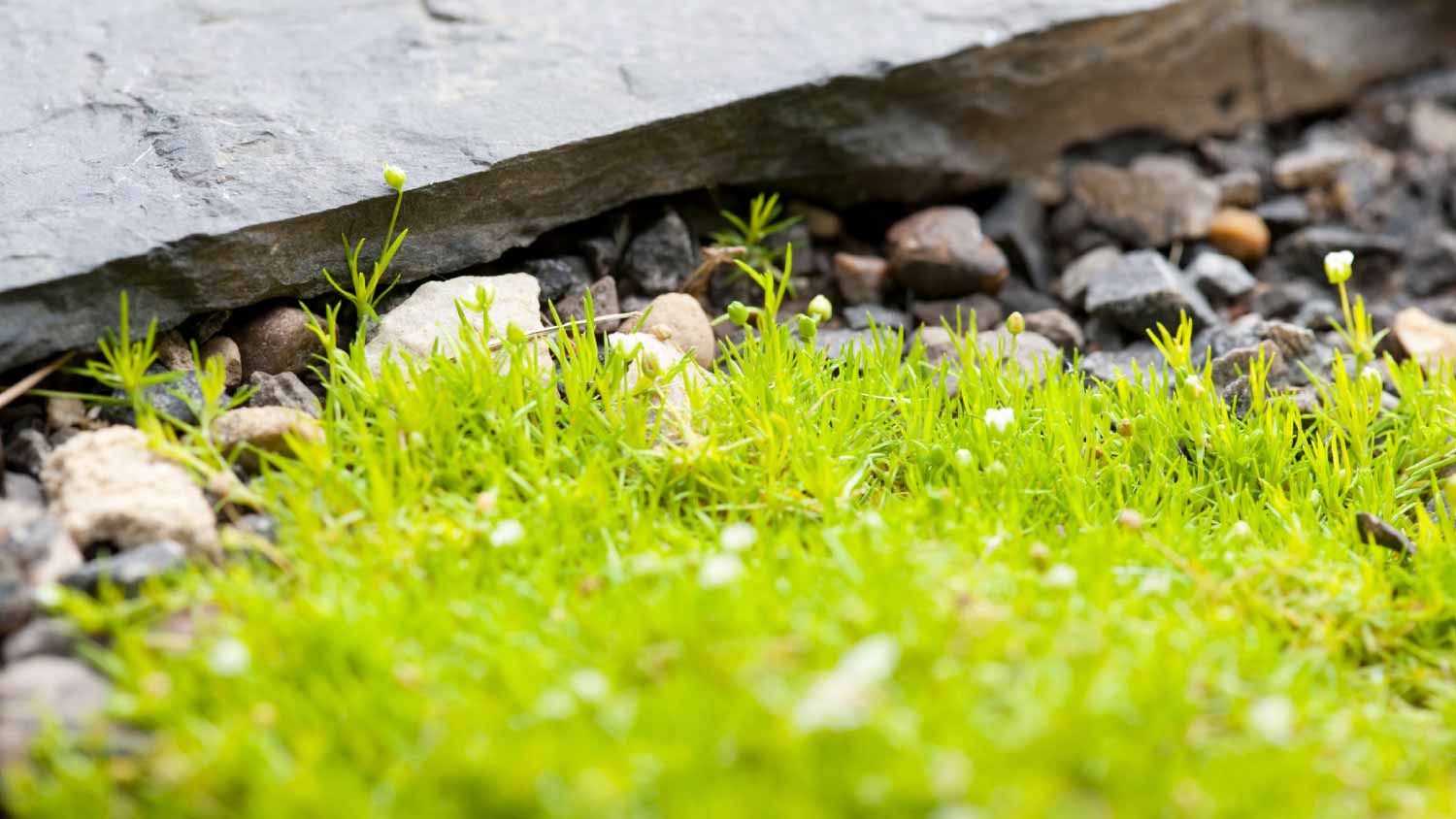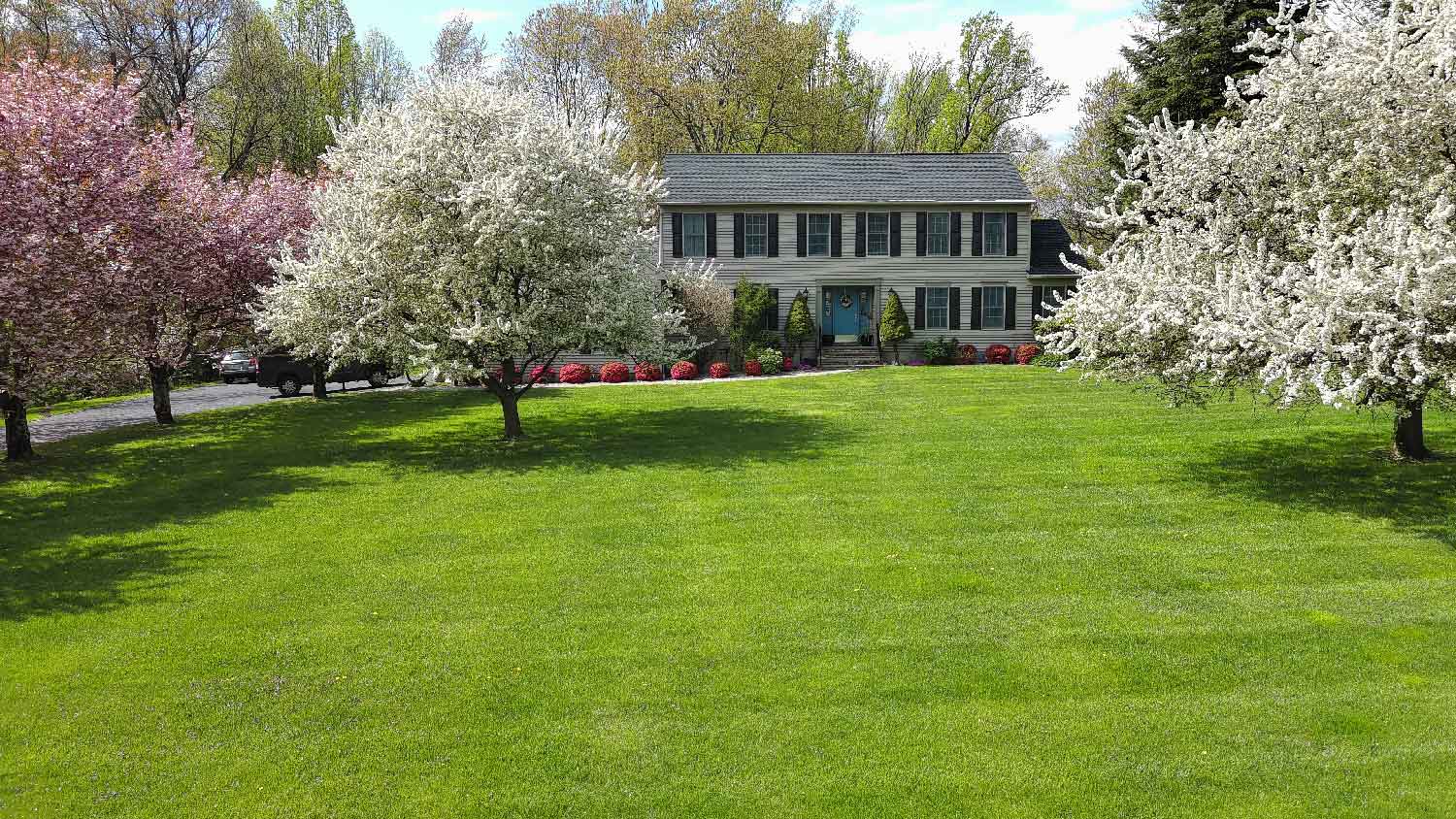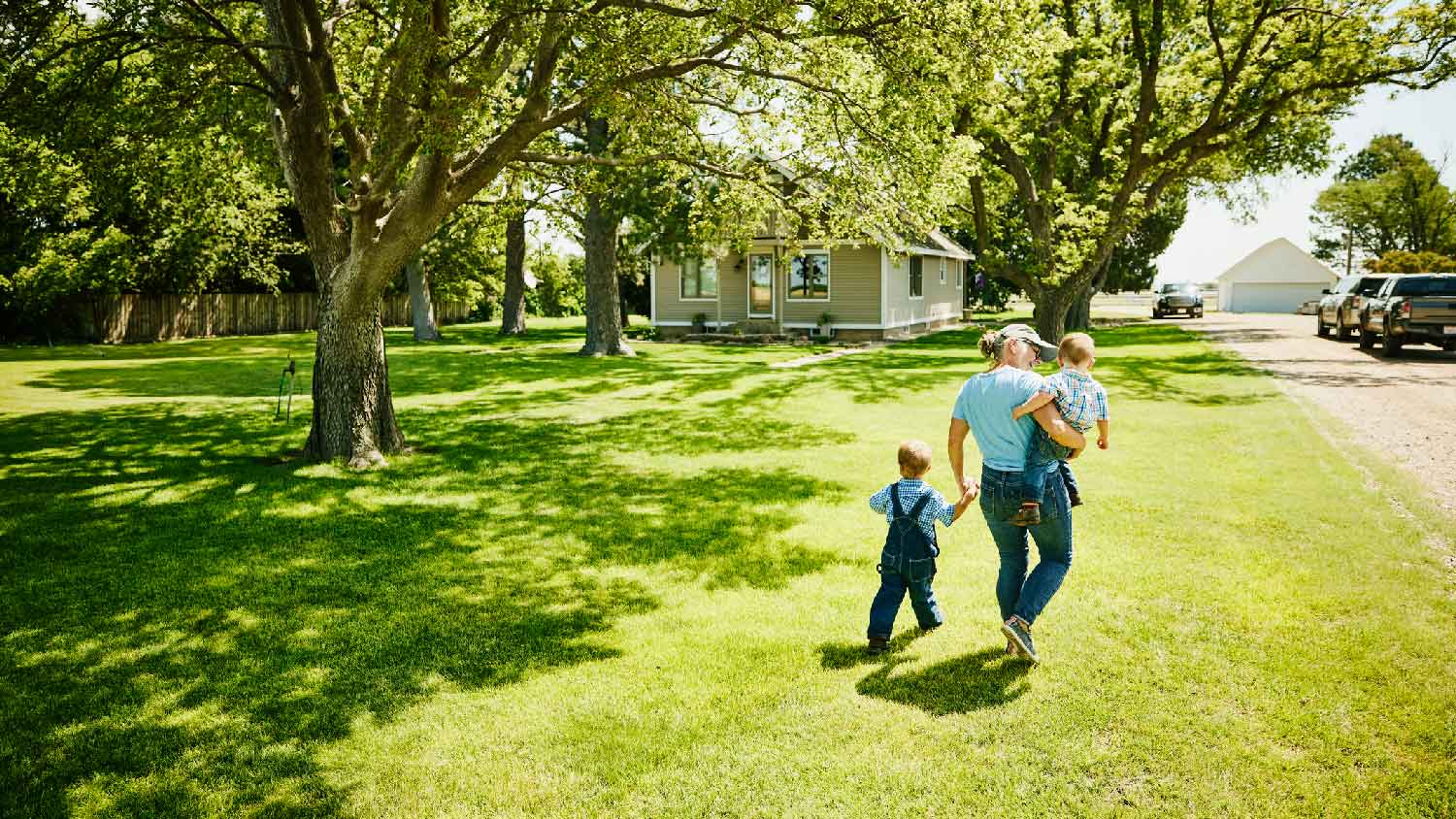Is Artificial Grass the Best Solution for Your Yard?
It might be time to put the lawnmower on the curb with a free sign attached


Artificial lawns look real but feel like plastic.
They are low-maintenance and have the potential to reduce 30% of your home’s water use.
Holes are punched into the fabric to allow for drainage.
Dogs tend to accept artificial lawns just fine—but the plastic material can be hot on their paws on sunny days.
Artificial lawns have an environmental impact as they take away habitat and can create microplastic contamination.
Have you ever spent a Saturday tending to your lawn and thought, “I should just rip it all out and put in an artificial turf lawn”? Good news if you’re thinking about it because turf lawns have come a long way since the plastic grass at the putt-putt golf course of your childhood. Here’s what you need to know before you tear out your lawn.
What Is Artificial Turf?
Artificial turf is composed of human-made fibers that might make your neighbors think you have the greenest grass in town. But if they look close up, here’s what they would see:
What looks like blades of grass are actually yarns made of polymers. Additives give it the color of grass and make it resistant to UV light and wear and tear.
The yarn is either twisted or wrapped and then sewn into a fabric backing.
To hold the fibers in place, liquid latex (often recycled polyester tire material) is applied to the fabric backing.
The coating hardens as it cures, which fixes the tufts in place.
Small drainage holes punched into the fabric allow snowmelt, rainwater, and pet waste to return to the earth.
Here are some factors to consider when deciding if artificial turf is worth it.
1. Consider the Look and Feel
Good quality synthetic grass passes real—at least from a distance. Even close up, it can be tough to tell if it's Mother Nature's grass or a manufactured product.
How Does Artificial Grass Feel?
A synthetic grass product doesn’t have the same feel as real grass. It has a plastic feel, and you might notice a subtle plastic rustling sound. It also absorbs and retains more heat than natural grass and may become uncomfortably warm for bare skin or pets on hot, sunny days.
How Does Artificial Grass Look?
The quality of artificial grass varies. In general, less expensive products look more like plastic lawns. You can purchase products with multicolored blades blended in, producing a naturally variegated lawn. The key to realism is that it doesn't look too perfect.
After about 10 years, artificial lawns tend to look worn.
2. Know the Benefits of Artificial Turf
The most obvious benefit is that an artificial lawn takes little maintenance. No more weekly mowing, comparing benefits of different types of fertilizer, or remembering to water only on even days.
Similarly, you’ll save money on fertilizers, weed control products, and local landscapers. Plus, there are many creative uses for artificial grass, from pool surrounds and pet patches to hardscaping covers.
You get a consistent texture because:
Synthetic turf doesn’t attract insects or hungry rabbits the way a real lawn does.
Animal waste doesn’t discolor or damage artificial turf.
Artificial grass “grows” just as well in shady parts of your yard as in full sun.
3. Consider How Your Pet Will Use the Lawn
Dogs often accept artificial turf just like they do grass. Liquid waste seeps through the holes in the fabric, while solid waste can be easily picked up or rinsed off.
Some artificial turfs are designed specifically for pets. They’re made with high-quality materials that can withstand playful pups running back and forth for hours as they chase after their favorite balls.
Just be careful on sunny days. The plastic grass material can be hot on pups’ paws.
“Artificial grass is perfect for most pets, but be sure to carefully consider the pros and cons to make sure it’s the right call for your pet,” says Tara Dudley, Owner of Plant Life Designs.
A local turf installation company can help you pick the right turf and infill (which lays under the turf). They lay infill under the turf. A crushed granite infill is a good artificial lawn choice for pets because it helps with urine drainage and inhibits mildew and bacteria growth. Skip sand and rubber infills, which retain odors.
Another one of the pros of artificial grass is that your dog won’t come in with muddy paws even on the rainiest day.
4. Think About the Environmental Impact of Turf
Landscape irrigation makes up about one-third of all residential water use, or about 9 billion gallons per day nationwide, according to the Environmental Protection Agency. The numbers are even higher in the hot Southwestern United States, where up to 60% of residential water use is on landscaping.
Installing fake grass eliminates the need for that water use. In addition, you save on the use of lawn chemicals that can be harmful to groundwater. You also save on fuel for any gas-powered lawn equipment.
But turf also takes away habitat and food sources for bugs, birds, and other critters. Microplastics from the turf can also end up in the groundwater. Artificial turfs have about a 10-year life before they look worn and need repairing.
Another grass-free option is to landscape with sand that provides a foundation for trees and plants to grow. Find more options for low-water landscaping.





- The Beginner-Friendly Guide to Growing the Greenest Grass
- Can You Overwater Grass Seed? Tips for Getting Your Irrigation Just Right
- How to Kill Grass in Flower Beds: 8 Easy Methods to Try
- How to Kill Orchard Grass in Your Lawn and Control It for Good
- Best Grass For High Traffic Lawns: 6 Types to Try
- When the Grass Is Greener: 10 Best Grass Types for Your Lawn
- Pros and Cons of No-Mow Grass: What to Consider
- When Grass Becomes a Weed: How to Control and Get Rid of Bermuda Grass
- 7 Tips for Keeping Your Grass Green During a Drought
- What Is Bermuda Grass? Everything You Need to Know for a Healthy, Green Lawn











